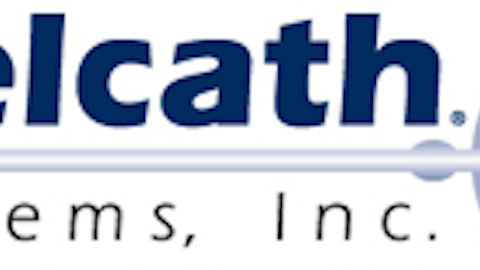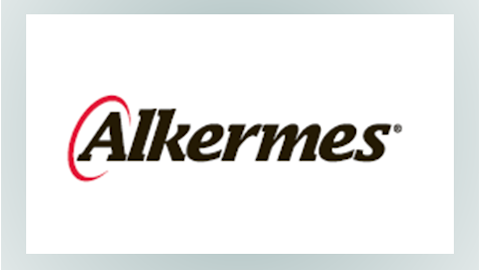Scott Henry: So when we think about cycles per quarter as we model out expectations for the launch, obviously, everyone doesn’t come in the first day of the quarter. It sounds like we should think about it as one to two cycles per quarter, depending on the…
Gerard Michel: Yes, one to two. Yes — one on average, kind of starting out early in the first quarter, one treatment a month per site, ending two. And then when I say treatment, I mean a cycle or a treatment. It could be — we’re not really counting patients right now because we were just scratching the surface at these levels in terms of the TAM. At some point, we’ll have to start talking about number of patients on therapy. But right now, we’re just focused on treatments or cycles.
Scott Henry: Okay. And Gerard, maybe for the typical hospital, maybe if you could just walk through how that hospital gets paid with this product? What is the procedure and how we should think about that?
Gerard Michel: Yeah. So for the typical hospital, there will be three components of payments, all right? And we’re going to talk about outpatient because the majority of these patients will be outpatient. They’re going to put in a set of CPT codes for a facility fee. They’re going to put in a set of CPT codes for the procedure for the doctor’s time. Now most of these doctors are on salaries, so it’s not a direct incentive to them, but they do care. And the third reimbursement component will be putting in for reimbursement for the drug itself , HEPZATO KIT. That will initially be with a C-code and that eventually we will get a J-code. But that’s a pass-through payment. So the hospital would be paid whatever we charge them, plus 6%. Let me just pause there and see if there’s any more detail or any particular part of that process that you’d like to hear about.
Scott Henry: No, I think that’s a good — so these three codes that all come into place, are all of them necessary to start the process? Or is there sequence that hospitals will want as they utilize this?
Gerard Michel: Yeah. So let me — Kevin, why don’t you explain the availability of how the CPT codes work in terms of being a portfolio of codes you’re going to use? And then when the — what they’ll do initially and then when the C-code comes on board, then a J-code.
Kevin Muir: Yeah. So thanks, Gerard. So CPT codes are nothing more than codes that describe what the physicians are doing during the procedure. So when they go through the step there will be — or when they go through the procedure, they will record what they do. The CPT codes will match what they do. They’re presented to CMS and the payment comes back. Those are — there’s going to be two payments, one for the hospital, one for these physicians. We’ve gone through a number of coding exercises to ensure both ourselves and our hospital partners that this will be — there are codes in place and if they code them correctly or they do the procedure, then the hospital will be reimbursed fully for what they are doing. Physicians, the same thing.
Their codes will pay them adequately for their time. So those are the two main concerns when you really come down to it. This is a lot of what’s done from the earlier question on the Value Analysis Committee, make sure the CPT codes are there for the hospital in position. And then the final part of that is the product. And we should anticipate hearing very soon back from CMS on our C-code or it’s called actually called a TPT, transitional pass-through application, which results in a C-code. We anticipate hearing on that shortly. Those usually go into effect on January 1, but sometimes they drag into January. So that should, as Gerard mentioned, be a pass-through payment for the hospital and they get a 6% administration fee on top of that. So again, from the customers — from the hospitals that we’ve talked to at this point in time, there seems to be more than adequate reimbursement for them to move forward.
Scott Henry: Great. That’s helpful. Gerard, that’s the scheduled for me. Thank you.
Gerard Michel: All right. Thanks so much, Scott.
Operator: Next question comes from Marie Thibault with BTIG. Please go ahead.
Unidentified Participant: Hey. Good afternoon. This is Sam Iber (ph) on for Marie. Thanks for taking the questions and congrats on the progress getting through some of those treatment sites. Maybe I can use my first question here on the work with the CMOs. I think I caught your comments earlier on the call that it’s taking a bit longer than expected. Just wanted to get any additional color on maybe some of the bottlenecks or work that’s going on behind the scenes there? Thanks.
Gerard Michel: Sure. So for — we’ve known for quite a while that we’d like to work more directly with a CMO for melphalan. What we — given the series of acquisitions based on who we initially signed up with melphalan, I won’t go through all the details, we’re ended up in a situation where Mylan holds the ANDA and they use a CMO Neopharma in Italy. Neuro pharma uses a set of CMOs or contract labelers to make the various labels and such. We have tried prior to approval and post-approval to take some of that work on ourselves saying, ship us naked vials, we’ll label it, we’ll make the labels and ship them up to Italy, anything we can to accelerate this. And unfortunately, since we’re a very small player for this generic product and these nested manufacturers, we really are having difficulty moving — getting them to move off of what they say is basically, here’s your contracted lead times.
Now there really was no way in our position to write a large check or even guess what the time of label would be to get way ahead of this. This is an unusual situation. Again, where we’re using a generic product, and we’re getting into carve-out a small run for us. And that’s really what the bottom line. Could it have been a little smoother perhaps. But at the end of the day, we’ve got to work with what I’m calling these net CMOs. This won’t be a problem longer term. We’ve already got an order in for a second full batch, which will be delivered probably shortly after the first batch. And so that will be well supplied going forward. We wouldn’t have these bottlenecks anymore. But again, it’s kind of a situation where we’re never really in a position to fund our own ANDA for this type of thing.
So we just kind of have to live with this situation. And as we go forward, we’re going to focus a lot on making sure the supply chain is robust as possible. And we don’t have any — we’re never at a stock out situation or a slowdown situation.




